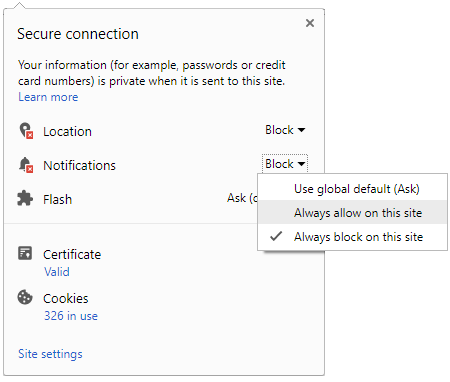Latest News
-
 The Rise and Fall of the TVS Jive: India's Pioneering Clutchless Motorcycle
The Rise and Fall of the TVS Jive: India's Pioneering Clutchless Motorcycle -
 Mahindra Bolero Neo Achieves 1-Star Safety Rating At Global NCAP – Automaker Responds
Mahindra Bolero Neo Achieves 1-Star Safety Rating At Global NCAP – Automaker Responds -
 India's Motorcycle Market 2023-24: Hero Splendor Leads Amidst Diverse Preferences
India's Motorcycle Market 2023-24: Hero Splendor Leads Amidst Diverse Preferences -
 Brixton Motorcycles To Revolutionize Indian Two-Wheeler Scene With Market Entry
Brixton Motorcycles To Revolutionize Indian Two-Wheeler Scene With Market Entry -
 Kia Carens Earns Mixed Safety Ratings Amidst Growing Popularity In India
Kia Carens Earns Mixed Safety Ratings Amidst Growing Popularity In India -
 Honda Amaze Scores 2-Star Safety Rating At Global NCAP Crash Tests – Next-Gen Model To Arrive In 2025
Honda Amaze Scores 2-Star Safety Rating At Global NCAP Crash Tests – Next-Gen Model To Arrive In 2025 -
 Hero Lectro Introduces Muv-e Electric Bike To Transform Delivery Services
Hero Lectro Introduces Muv-e Electric Bike To Transform Delivery Services -
 Chrysler Pacifica Marks Seven Years As Most Awarded Minivan With New Campaign
Chrysler Pacifica Marks Seven Years As Most Awarded Minivan With New Campaign -
 Nissan Magnite Achieves 1 Lakh Unit Sales Milestone: Consistency Helps
Nissan Magnite Achieves 1 Lakh Unit Sales Milestone: Consistency Helps -
 Log9 Unveils Amphion & Nexmile – Revolutionizing EV Asset Management
Log9 Unveils Amphion & Nexmile – Revolutionizing EV Asset Management
Atal Tunnel Inaugurated By Prime Minister Narendra Modi: Distance, Facts & Other Details
Prime Minister Narendra Modi has inaugurated the Atal Tunnel in Rohtang on October 3, 2020. The Atal Tunnel took around 18 years to complete because of the geological challenges faced during the construction.

The Atal Tunnel is the is the longest high-altitude highway tunnel in the world and spans 9.02 kilometres in length. connects Manali to Lahaul-Spiti valley throughout the year. Earlier the road remained closed or non-serviceable for about six months every year owing to snowfall.

The tunnel is built with ultra-modern specifications in the Pir Panjal range of Himalayas at an altitude of 3000 metres (10,000 feet) from the Mean Sea Level (MSL). The study for the feasibility of the project was done back in 1990.

The decision to construct a strategic tunnel below the Rohtang Pass was taken on June 3, 2000, by Shri. Atal Bihari Vajpayee when he was the Prime Minister of India. The foundation stone for the access road to the (SP) South Portal of the tunnel was laid on May 6, 2002.
The South Portal (SP) of Atal Tunnel is located at a distance of 25 km from Manali at an altitude of 3,060 metres. While the North Portal (NP) of the tunnel is located near village Teling, Sissu, in Lahaul Valley at an altitude of 3,071 Metres.

The first blast for the construction of this revolutionary tunnel took place back in 2010 and the worker completed the blasting sequence in the year 2017. The tunnel was constructed using drill and blast NATM (New Austria Tunnelling Method) techniques.
The new tunnel now reduces the road distance by 46 kilometres and decreases the travelling time by around five hours between Manali and Leh. The (BRO) Border Roads Organisation has worked tirelessly in reaching the final stage and giving the nation a safer and smoother way to travel regardless of the weather condition.

According to officials, the most difficult part of the construction was to build over the 587-metre Seri Nalah Fault Zone. Again the Border Roads Organisation (BRO) worked relentlessly to overcome this difficult challenge. The breakthrough from both ends was achieved on October 15, 2017.
Here are some of the specification of the Atal Tunnel:
It features a horseshoe-shaped, single tube double lane tunnel design with a roadway of 8 metres. It has an overhead clearance of 5.525 metres. The road is 10.5-metre wide and has a 3.6 x 2.25 metres fire-proof emergency egress tunnel built into the main tunnel itself.

There are 18 egress tunnels where after every 500 metres there is an opening in case of emergency. These safety tunnels can be used by people in case of emergency or a fire inside the tunnel.
Apart from the safety tunnel, there are other features to ensure ample safety of travellers using the Atal Tunnel. This includes telephone connections at every 150 meters for emergency communication, fire hydrant mechanisms at every 60 meters, auto incident detection system with CCTV cameras at every 250 meters, air quality monitoring at every 1KM, evacuation lighting, exit signs and broadcasting system throughout the tunnel; among others.

The Atal Tunnel has been designed to handle a traffic density of 3000 cars and 1,500 trucks per day. The maximum speed limit of the tunnel is set at 80 km/hr. It has the state of the art electromechanical system including semi transverse ventilation system, which will constantly monitor the air quality index inside the tunnel.
The Union Cabinet met under the chairmanship of Prime Minister Shri Narendra Modi decided to rename the tunnel on December 24, 2019. The Rohtang Tunnel was renamed as Atal Tunnel to honour the contribution made by Atal Bihari Vajpayee.

Thoughts About The Atal Tunnel Inaugurated By Prime Minister Narendra Modi
It is certainly a great achievement for the nation as the Atal Tunnel was commissioned for public use. The new tunnel will help travellers to cut down on the distance and time 365 days in a year. The tunnel features ample safety for users in case of an emergency as well.



 Click it and Unblock the Notifications
Click it and Unblock the Notifications














